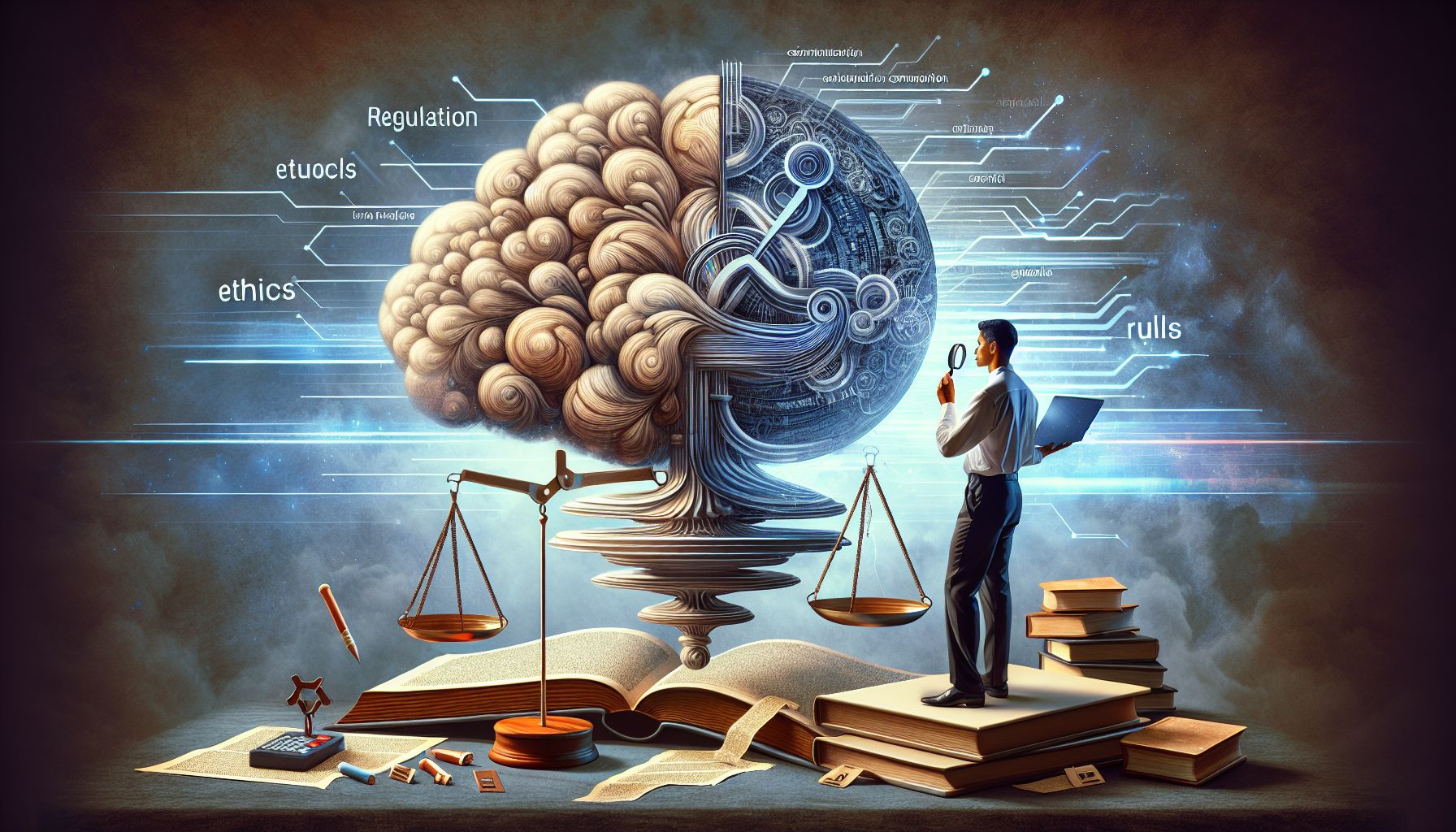📌 Let’s explore the topic in depth and see what insights we can uncover.
⚡ “Imagine waking up one day to a world run amok due to AI systems with no rules! To prevent this potential chaos, let’s delve into the regulations and compliance guidelines that keep our AI technology on a tight leash.”
In a world where artificial intelligence (AI) is no longer a futuristic concept but a reality that’s impacting nearly every aspect of life, understanding compliance and regulatory guidelines is crucial. 📚 Whether you’re a tech enthusiast, an AI developer, a policy maker, or a curious reader, a solid understanding of the rules governing AI can help ensure this powerful technology is used ethically, responsibly, and lawfully. As AI evolves and becomes more sophisticated, so too does the necessity for comprehensive, clear, and adaptable regulations. From privacy concerns to ethical issues, the potential risks surrounding AI are complex. This guide will help you navigate the labyrinth of AI regulation and compliance guidelines, highlighting key areas to understand and follow.
⚖️ The Importance of AI Regulations

"Navigating the maze of AI regulation and compliance."
AI, with its ability to mimic human intelligence and learn from experience, holds immense potential. However, its power also raises significant concerns, such as the potential for misuse, bias, discrimination, and violations of privacy. Regulations provide a framework to protect individuals, businesses, and societies from these potential harms.
Understanding AI regulations is crucial for:
Developers and AI companies
They must ensure their AI systems comply with existing regulations to avoid legal repercussions, and to build trust with their users.
Policy makers
🧩 As for They, they’re responsible for crafting effective regulations that balance innovation with protection against misuse.
General public
As AI increasingly affects our daily lives, understanding these regulations can help us make informed decisions about the AI services we use.
📜 Key Areas of AI Regulations
AI regulation is a broad field, encompassing a variety of areas. Here are some key areas to study:
1. Privacy and Data Protection
AI systems often rely on large amounts of personal data. Regulations like the European General Data Protection Regulation (GDPR) and California Consumer Privacy Act (CCPA) set guidelines for how personal data can be collected, stored, and used. These include:
Consent
AI systems must obtain user consent before collecting personal data.
Transparency
Users have the right to know how their data is used.
Data minimization
Only necessary data should be collected and processed.
Security
Strong measures must be in place to protect data from breaches.
2. AI Ethics and Fairness
AI systems should be designed and used in a way that respects human rights and values. This includes:
Non-discrimination
AI systems should not perpetuate bias or discrimination.
Accountability
There must be mechanisms to hold AI systems, and those who create them, accountable for their actions.
Human oversight
AI should augment human decision-making, not replace it.
3. Safety and Reliability
AI systems must be reliable and safe to use. This includes:
Robustness
AI systems should be able to withstand errors and attacks.
Transparency
It should be clear how AI systems make decisions.
Auditability
There should be ways to check and validate AI systems’ decisions.
📚 Understanding Compliance in AI Systems
Compliance refers to the act of adhering to regulations and standards. In the context of AI, this means ensuring that your AI system respects privacy, promotes fairness, and is safe and reliable. Here are some tips to achieve compliance:
Stay updated with regulations
Regulations evolve, so it’s essential to stay updated.
Implement privacy by design
Incorporate privacy measures from the beginning of your AI system’s design process.
Test for bias and fairness
Use tools and practices to ensure your AI system doesn’t perpetuate bias.
Ensure transparency
Be clear about how your AI system works and makes decisions.
🌍 International Perspectives on AI Regulations
AI regulations differ across the globe, reflecting different cultural, social, and political contexts. Here are some highlights:
European Union
The EU has proposed a comprehensive legal framework for AI. It emphasizes the need for transparency, accountability, and human oversight of AI systems.
United States
The approach in the US is more sector-specific, with different regulations for AI in healthcare, finance, etc. There’s also an emphasis on self-regulation by the industry.
China
China has robust regulations around data protection and privacy, but less focus on ethical considerations.
🧭 Conclusion
Regulation and compliance guidelines for AI systems form an intricate maze that everyone involved in the field of AI must navigate. From privacy and ethics to safety and reliability, these regulations serve to protect us from potential harms while allowing AI to deliver its vast potential benefits. As we continue to witness the rapid evolution of AI, staying informed about these regulations is not just the responsibility of developers and policymakers, but also the general public. After all, it’s our lives that AI is transforming, and we must ensure it does so in a way that respects our rights, values, and well-being. So next time you encounter an AI system, remember: behind it lies a labyrinth of regulations and guidelines that make your interaction with it safe, fair, and transparent. And isn’t that a comforting thought? 🕊️
🤖 Stay tuned as we decode the future of innovation!
